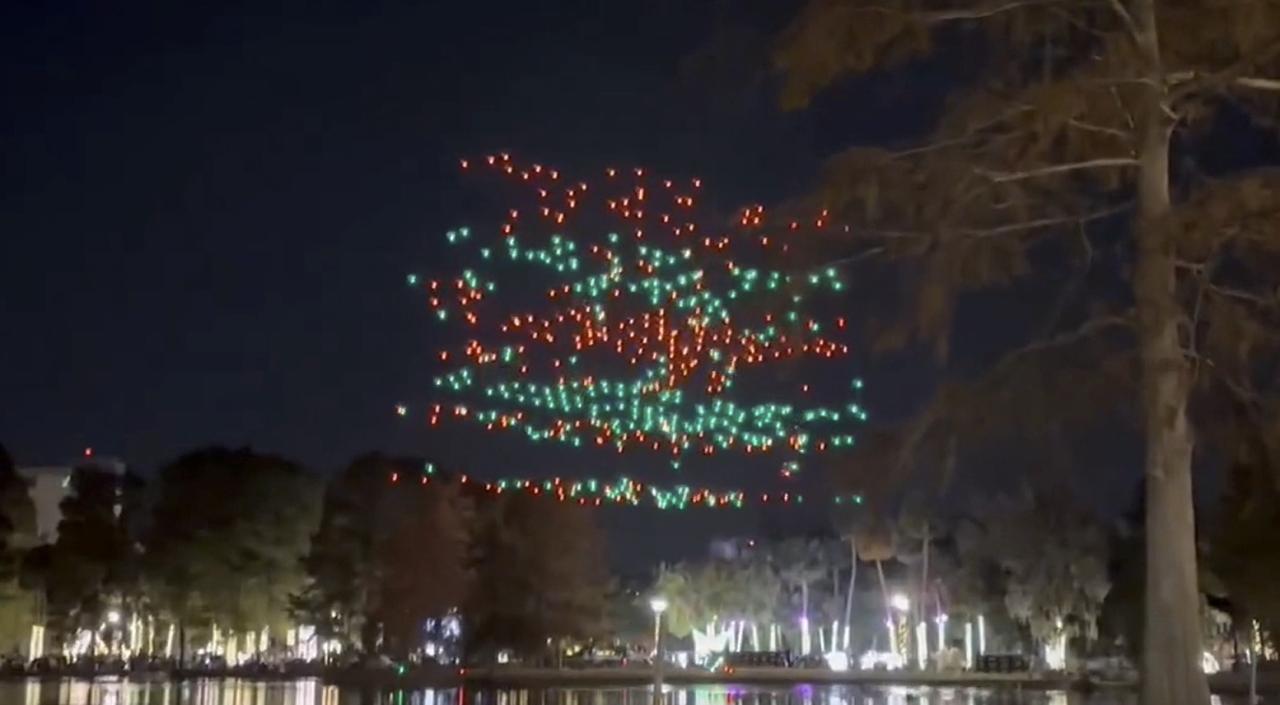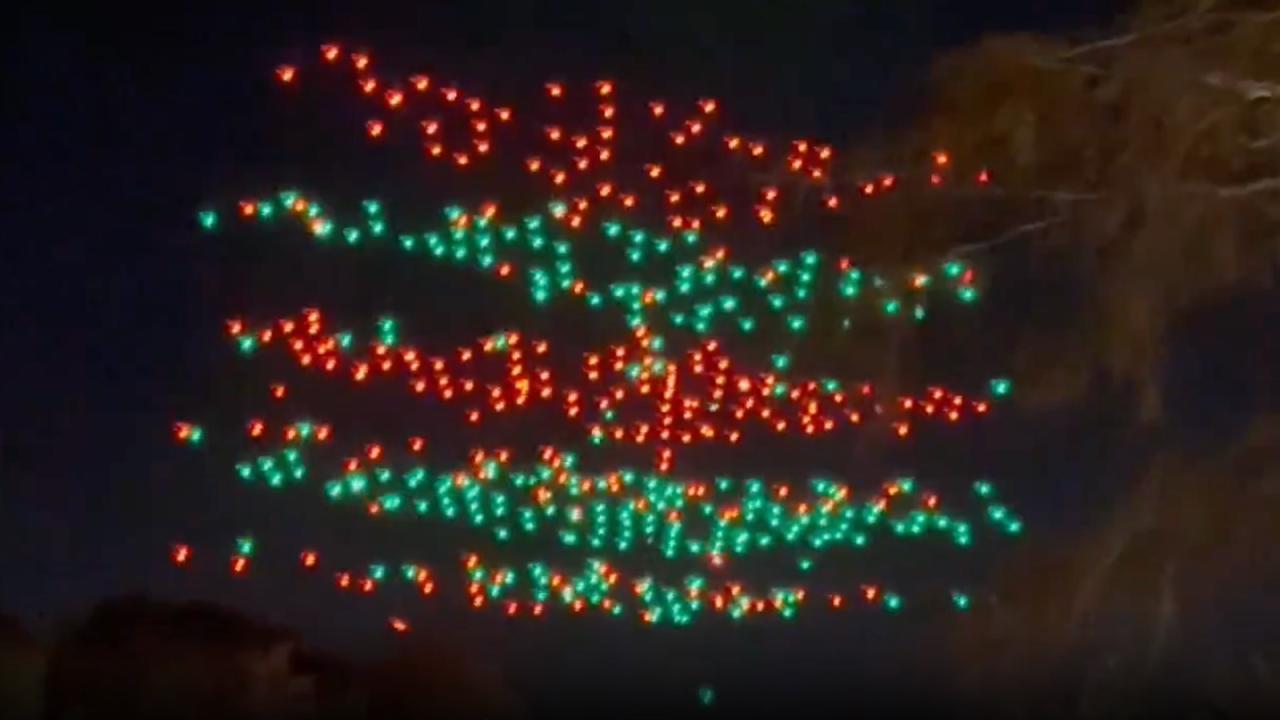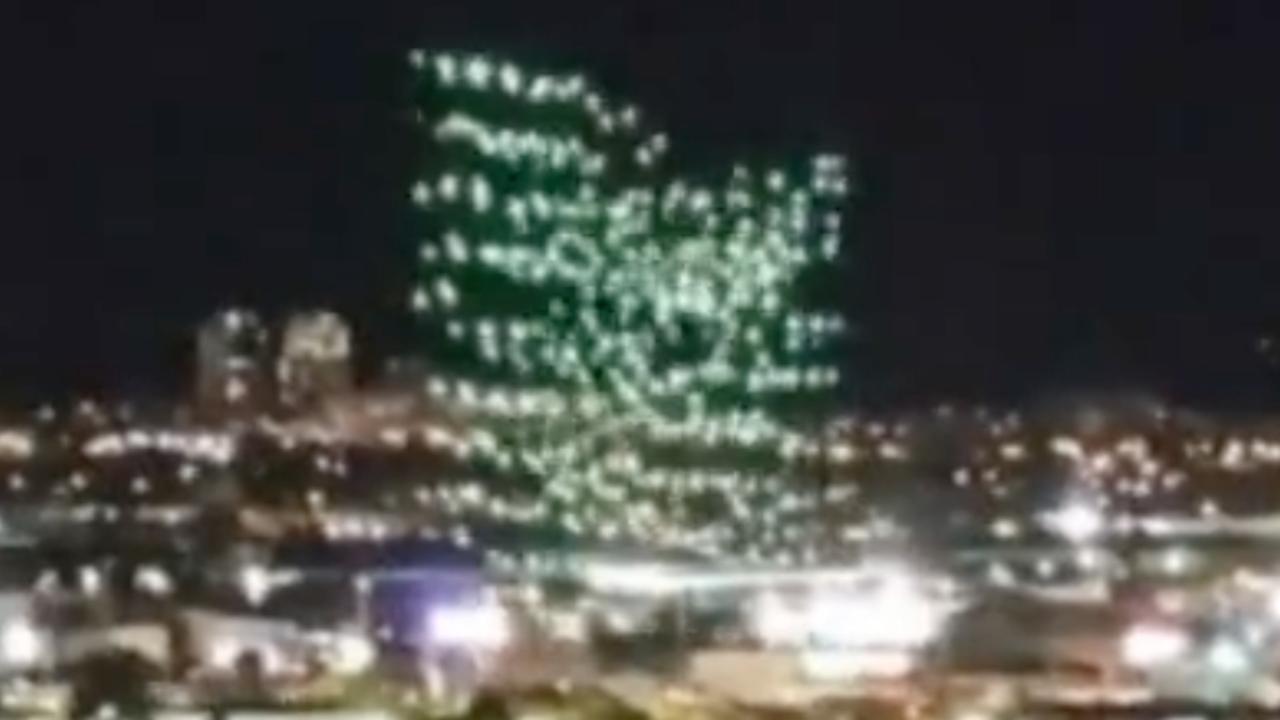Orlando drone show malfunction captivated and concerned onlookers as a spectacular aerial display descended into chaos. This incident serves as a critical case study, examining the technical failures, spectator impact, legal ramifications, and broader implications for drone technology and public perception. We delve into the specific details of the event, exploring potential causes and analyzing the response, both immediate and long-term.
The unexpected failure highlighted crucial safety concerns within the rapidly evolving world of drone technology, prompting a deeper look at current regulations, emergency protocols, and the need for improved safety systems. Understanding this event provides valuable insights into the future of drone shows and the importance of robust safety measures.
Orlando Drone Show Malfunction
The recent malfunction during a drone light show in Orlando has sparked conversations about the safety and technological limitations of large-scale drone displays. This incident highlights the need for robust safety protocols and advanced technological safeguards to prevent future occurrences and maintain public confidence in this emerging form of entertainment.
Incident Overview

On [Insert Date], at approximately [Insert Time], a drone light show over [Insert Location in Orlando] experienced a significant malfunction. The show involved approximately [Insert Number] drones, each [Insert Drone Model and Specifications, e.g., equipped with LED lights and capable of independent flight]. The malfunction resulted in [Describe the malfunction in detail, e.g., a loss of synchronization among the drones, leading to erratic flight patterns and several drones crashing to the ground].
Initial reports suggest [Insert details of any immediate consequences, e.g., no significant injuries were reported, but some minor property damage occurred].
The recent Orlando drone show malfunction highlights the complexities of large-scale aerial displays. Such incidents underscore the need for robust technological safeguards, a need perhaps best illustrated by the precision engineering involved in projects like the cobequid pass camera , which demands equally high levels of reliability and control. Ultimately, the Orlando mishap serves as a reminder of the potential for technical failures even in seemingly well-rehearsed events.
Technical Aspects

Several technical factors could have contributed to the malfunction. Potential causes include software glitches within the drone’s flight control system, hardware failures in individual drones (e.g., motor malfunctions, GPS receiver issues), or external interference such as GPS signal jamming. The drones’ flight control systems likely rely on GPS for positioning and communication, with a central control system coordinating the movements of the entire fleet.
Points of failure could include communication breakdowns between the drones and the control system, GPS signal loss, or errors in the flight path programming. While specific details about the safety protocols employed remain undisclosed, a comparison with industry best practices suggests potential areas for improvement. A hypothetical improved safety system could incorporate redundant GPS systems, fail-safe mechanisms for individual drone malfunctions (e.g., emergency landing protocols), and real-time monitoring and intervention capabilities to address issues immediately.
Spectator Impact

Eyewitness accounts describe the audience’s initial reaction as a mixture of surprise and concern as the drones deviated from their programmed flight paths. The unexpected events created a sense of unease and uncertainty among the spectators. [Insert details about audience reactions]. Fortunately, [Insert details about reported injuries and damages]. The incident’s impact on the event’s reputation and future bookings is yet to be fully assessed, but it undoubtedly casts a shadow over the organizers and the technology itself.
The Orlando drone show malfunction highlighted the complexities of large-scale drone operations, raising questions about safety protocols and technological reliability. This incident contrasts sharply with the strategic implications of drone warfare, as seen in the recent ukraine drone attack on russia , where the technology is used for military objectives. Understanding both the entertainment and military applications of drones is crucial for improving safety and mitigating potential risks.
| Incident | Location | Injuries | Public Reaction |
|---|---|---|---|
| [Incident 1 Details] | [Location 1] | [Injuries 1] | [Public Reaction 1] |
| [Incident 2 Details] | [Location 2] | [Injuries 2] | [Public Reaction 2] |
| [Incident 3 Details] | [Location 3] | [Injuries 3] | [Public Reaction 3] |
Regulatory and Legal Ramifications, Orlando drone show malfunction
The Federal Aviation Administration (FAA) regulations govern drone operation in the United States, including in Orlando. These regulations cover aspects such as registration, pilot certification, operational limits, and airspace restrictions. The organizers and drone operators may face legal liabilities depending on the findings of any investigations into the cause of the malfunction. [Insert details about relevant regulations and potential legal liabilities].
This incident can be compared to other drone-related legal cases, such as [mention examples of similar cases], to understand the potential legal ramifications. To mitigate future risks, event organizers should ensure compliance with all relevant regulations, implement comprehensive safety protocols, obtain necessary permits and insurance, and conduct thorough risk assessments before any drone show.
- Conduct a thorough pre-flight inspection of all drones.
- Develop a detailed emergency response plan.
- Secure appropriate insurance coverage.
- Comply with all FAA regulations.
Impact on Drone Technology and Public Perception
This incident could negatively impact public perception of drone technology, particularly regarding the safety of large-scale drone shows. However, it also serves as a valuable learning experience for the industry to improve safety standards and technological advancements. Future drone show designs could incorporate enhanced safety measures, such as fail-safe mechanisms, redundant systems, and improved communication protocols. A potential future drone show design could feature drones with improved GPS and communication systems, real-time monitoring of drone health, and automated emergency landing procedures.
- Current Drone Technology: Reliance on single GPS systems, limited real-time monitoring, basic emergency protocols.
- Future Drone Technology: Redundant GPS and communication systems, advanced sensors for obstacle avoidance, AI-powered flight control, real-time health monitoring, automated emergency landing systems.
Emergency Response

The emergency response procedures implemented during the malfunction need further details to be evaluated effectively. A comparison with industry best practices for emergency response during drone incidents is necessary to identify areas for improvement. A step-by-step procedure for improved emergency response could involve immediate communication with relevant authorities, a coordinated effort to secure the area, and efficient procedures for retrieving malfunctioning drones while minimizing risks.
The Orlando drone show malfunction highlights the complexities of large-scale drone operations. Such incidents underscore the need for robust safety protocols, a point emphasized by recent events like the ukraine drone attack on russia , which showcased both the potential and the inherent risks associated with unmanned aerial vehicles. Ultimately, both the Orlando mishap and the Ukraine conflict demonstrate the critical importance of technological reliability and strategic planning in drone deployment.
- Immediately halt the drone show and initiate emergency protocols.
- Contact local authorities and emergency services.
- Secure the affected area to prevent further incidents or injuries.
- Implement a systematic procedure for retrieving malfunctioning drones.
- Conduct a post-incident investigation to determine the root cause of the malfunction.
The Orlando drone show malfunction underscores the critical need for rigorous safety protocols and technological advancements in the drone industry. While the immediate impact involved audience disappointment and potential legal consequences, the long-term implications extend to the evolution of drone technology itself. A comprehensive review of this incident, including improvements to both technical systems and emergency response procedures, is essential to prevent similar occurrences and maintain public trust in this exciting yet developing field.
FAQ Summary: Orlando Drone Show Malfunction
What type of drones were involved in the Orlando drone show?
Specific drone models and manufacturers involved would need to be determined from official reports following the incident.
Were there any injuries reported among spectators?
This would depend on the specifics of the malfunction and any subsequent investigation. Details would be available in official reports or news coverage following the event.
What is the expected financial impact on the event organizers?
The financial impact could include costs associated with repairs, refunds, legal fees, and reputational damage, varying greatly depending on the specifics of the incident and its aftermath.
What are the potential long-term consequences for the drone show industry?
Potential long-term consequences could include stricter regulations, increased safety standards, and technological innovations aimed at preventing similar malfunctions in the future.
